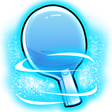Playing Counterattackers
Strategy
Ilia Minkin Asked 10 years ago
Hi Alois,
I really enjoyed all your lessons on match strategy: playing blockers, attackers, etc. But how to play a counterattacker? I recently went to a tournament, where I had to play lots of kids with nearly identical style. They all were counterattackers at a very early age! They didn't have a strong attack against backspin, but they all had a blazing forehand counterloop (where does their power come from?!). My style is based on slow spinny openers and stronger followup topspins. But this time I often found myself desperately blocking all their counterloops and trying to take a breath in between. With a wonder and a wild desire I had managed to get to the final of a low-ranked event, but lost 3-1 to such a kid. How to play them considering the fact that I don't have a strong attack against backspin myself?
 Alois Rosario Answered 10 years ago
Alois Rosario Answered 10 years ago
Hi Ilia,
When playing these types of players, vary the placement of your first topspin and also just vary the speed slightly. You will find that if you can get some variations it doesn’t take much to make them start to miss. These type of players are good when the ball is going to them where they want it but as soon as something starts going wrong, their game can fall apart very quickly.
Recommended Video
Gerada v Miao - The Final
In this entertaining final of the PIngSkills classic, the power of Simon Gerada comes up against the speed of Miao Miao.
Watch NowThoughts on this question
Become a free member to post a comment about this question.
Ilia Minkin Posted 9 years ago
Hi Alois,
But just in case when my opponent plays a counterattack, what is the best way to practice to prepare myself? Playing counterloops? Or just playing this exact sequence when I serve, attack, and then counter-counter-attack? Can I do this with multiball?
Hi Ilia,
You can do this with multi-ball but one ball drills are better for this so you can track what is happening.
Start with a backspin serve, get your partner to push the ball back long to you. You make the topspin to one position, usually their forehand, and then get your partner to counterattack. Make sure after your first topspin you stay stable with your legs and body and watch the ball carefully. Remain in a neutral position between forehand and backhand so that you can react if the ball comes to either side.
Ilia Minkin Posted 9 years ago
Thanks, Alois!
Jean Balthazar Posted 9 years ago
"where does their power come from?!" It comes from your own opening shot. Therefore, if you give them a weaker / slower opener sometimes, not only will it make it harder for them to adjust as Alois said, but also will they have less energy to work with and send back at you if they're not strong attackers, so you'll have a better chance to take back the initiative even if they counter your shot correctly.
Ilia Minkin Posted 9 years ago
>It comes from your own opening shot.
Come on, 90% of my openers are reaaaaaaaaaaaaaaaaalllyyyyyyyyyyyyyyyy slow.
Jean Balthazar Posted 9 years ago
It's not only your speed, it's also your spin that will make the ball burst out of their racket and back to you quickly, even if they don't do a really powerful shot.
Ilia Minkin Posted 9 years ago
Hehe, interesting, I have never thought about that.